It was only a few months since Huawei last shipped their flagship the Mate20 Pro, but such is the rate of innovation in from China’s smartphone manufacturers, that there’s now the P30 Pro.
The latest from Huawei iterates on much of what was great about last year’s P20 Pro and makes it better. Now the P30 Pro actually has a serious upgrade to its camera.
Smartphone cameras have radically improved over the past few years, but the Huawei are now addressing the biggest outstanding capability and that’s the ability to zoom. There’s plenty of occasions in my life, where I can’t physically move closer to a subject to take the photo I want to, instead the P30 Pro enables you to zoom in with the first 5x optical zoom in a smartphone.
With the ability to zoom, Huawei are now threatening the DSLR consumer market in a big way. While there’ll always be photography enthusiasts, like there are vinyl enthusiasts, the mainstream market are leaving the big cameras and lenses at home, in favour for their smartphone’s camera of which, the convenience can’t be beaten.
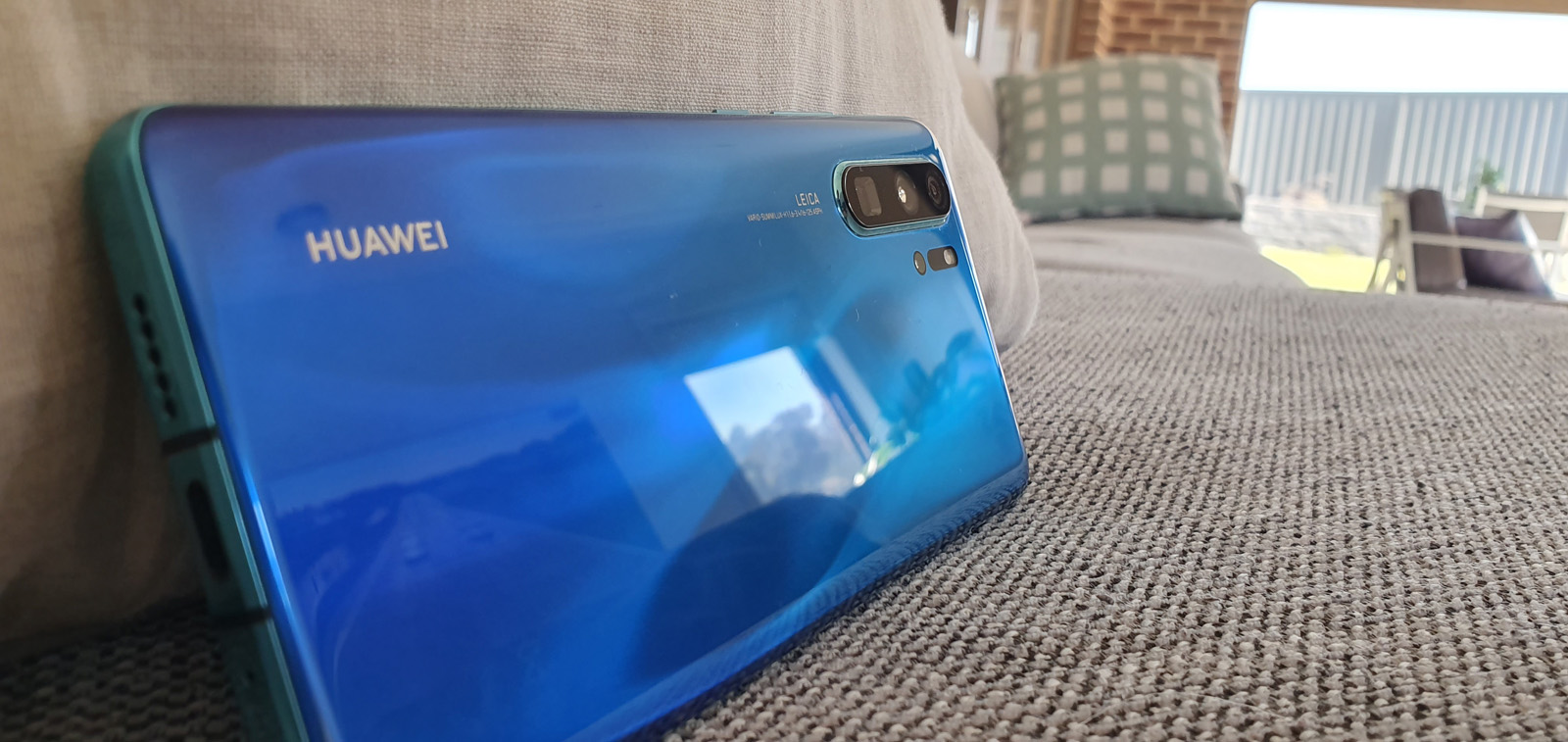
DESIGN
Efficiently sized for smaller rooms
The P30 Pro is another big slab of glass that reflects this year’s full-face display trend. The severe notch of last year’s design is gone, instead replaced with an efficient teardrop to envelop the front-facing camera. This actually works really well, finding a nice blend between the need to provide for selfies and face unlock, while not disturbing the overall design or UI in a substantial way.
When you turn over the phone, things start to get very interesting. The beautiful gradient quickly distinguishes the Huawei device from its competitors and the review unit I received is the gorgeous Aurora in colour. This spans the colour spectrum from a light blue, almost cyan, right through deeper blue and even purple in different lighting conditions. The other colour available in Australia is known as Breathing Crystal, a lighter finish, ranging from white, through a vibrant blue and finishing the gradient in purple.
The edges of the phone are finished in a light blue, polished metal, while that works nicely with the back, I could easily see a chrome or even polished black finish also works well here. At the bottom of the phone, you’ll find the dual 4G sim tray, microphone, the USB-C charging connector and the speaker grill. The P30 Pro is not your friend if you’re looking for the legacy 3.5mm jack, your options are USB-C headphones or go wireless with Bluetooth. On top of the phone, you’ll find an IR blaster which I always appreciate, providing the opportunity to grab a remote app and controlling your home AV.
Down the right side of the phone, you’ll find the standard volume rocker, and power button, while the left side is left completely clean and void of interruptions.


FEATURES
Connected and capable
In terms of features, you’d be hard pressed to find a phone with more than the P30 Pro. Between the cameras, the amazing battery life, to the in-screen fingerprint reader and the on-board AI, this phone offers everything you’d expect from a flagship in 2019.
Camera
One of the primary reasons people will buy this phone is camera technology. Leveraging the talents of Leica, the phone features a Quad Camera System that enables you to quickly and easily capture the world. One of the most difficult challenges of photography is to capture an image that truly represents what you see with your eyes and using the P30 Pro, it’s one of the closest experience I’ve had to date.
On the back of the phone is a vertically arranged camera array that contains a 40 megapixel wide-angle (f1.6), a 20MP Ultra-wide angle (f2.2), an 8MP Telephoto lens (f3.4) and a Time-of-flight camera that helps to improve the distance between your subject and the background. This enables you to pull some amazing boke effects that were previously restricted to DSLRs.
When taking photos, you’ll have the assistance of Huawei’s AI that constantly analyses what you’re pointing the phone and automatically adjusts the camera settings to take the best photo possible. This means taking photos is incredibly easy and while there is a Pro mode for you to adjust parameters yourself, I found the AI worked so well, I never had to.
As you go about taking photos in different environments, you’ll find plenty of times where you wish you could zoom out and zoom in to capture the whole environment, to the finest detail. Thankfully the P30 Pro enables both extremes, with zoom levels from 0.6x to 5x in the optical range, while digital zoom extends right the way through 50x. Until now we’ve really only had digital zoom and what optical adds is the ability to get the same great quality photos, without losing quality (like digital). When you do step into the digital zoom range, Huawei’s software is clearly doing some magic as the quality doesn’t degrade as quickly as you may expect. Often photos were taken at 10x still look great, while the 50x can still have the detail necessary to read things like number plates from a long distance away.
Another attribute of the camera that I enjoy is the ability to capture photos as close as 2.5cm. When you hold the camera close to something like a receipt, you’ll see the mode switch to ‘Super Maco’ and the result is very impressive. This has been a long-running frustration with smartphone cameras, but thankfully Huawei found a hardware and software combination that gets the job done.
The 32MP front camera on the HUAWEI P30 Pro intelligently optimises selfies even in extremely tricky situations such as in low light or with the sun behind you.
OIS
As you take photos and record videos, you’ll have the advantage of being assisted by dual optical image stabilisation. On top of this, Huawei also leverage AI in the processing of the content passing through the image processor and further smooth handheld videos, resulting in a very slick, almost steadicam level.
Security
Something we’ve seen from Huawei for a while now is in-screen fingerprint readers and the P30 Pro also includes this feature. While unlocking the phone this way works well, a majority of the time I leveraged face unlock. Huawei really set the trend on this feature, with other flagships like Samsung’s S10 series devices also now including an in-display fingerprint reader.
A screen that produces sound
As we minimise the notch at the top of the display, something that has disappeared is the speaker usually found at the top of the device, to send sound to your ear while on a call. The HUAWEI P30 Pro takes a different approach, with HUAWEI’s Acoustic Display Technology which projects sound to your ear, using vibrations in the display. This sounds like science fiction, but you seriously wouldn’t know there’s no speaker there. There’s also no buzzing or vibration felt when you use it, so the notch is dramatically reduced thanks to this innovation.
Battery life
The battery life on the P30 Pro is seriously impressive, often still having 30%+ remaining at the end of the day. This means light users would practically be able to get a couple of days from a single charge. This is achieved thanks to class a class-leading 4200mAh battery, combined with some AI optimisation that keeps an eye on the apps to ensure they behave and only take power when they absolutely need it.
Charging
If you do need a recharge in a hurry, then the SuperCharge technology will get you recharged from 0 to 70% charge in just 30 minutes. Continuing on the feature from the Mate 20 Pro, the Huawei P30 Pro not only charges wirelessly it, but it can also reverse wireless charge other phones, headphones etc. At first, this definitely seemed like a gimmick, but after travelling a bit with the P30 Pro, I have found genuine needs to charge other devices, with wireless headphones being the most practical example. You could definitely make some friends at a party if you’re the one with the phone that can charge others that are running flat at the end of the night. Given the battery life on offer here, it’s actually a viable option, while other phones offering this may struggle to service their own needs.
Water resistant
In the throws of using the phone, you need and frankly expect it to take real-world usage. That means you may be walking down the street and get hit by a sprinkler or place it on the shelf in your shower so you can listen to music, either way, a bit of water isn’t a problem for the P30 Pro thanks to its IP68 water and dust resistance. This also works well if you’re walking with your phone and it starts raining, you can actually continue to use it, while obviously not pushing things too far, that’s actually really helpful if you need the phone for something like navigation around an unknown city. This feature is fairly common among phones and certainly not unique to the P30 Pro, but is something you need to check the box for if you’re a serious flagship competitor.
Accessories
When you buy the P30 Pro, you’ll get a few things included in the box. Of course there’s the super fast charger which connects to 240v and a USB-C cable, along with a set of USB-C headphones which actually fit my ears really well and have an in-line control. There’s also a clear case included, so if you’re worried about protecting your investment, you don’t have to rush to the shops to get a case. This certainly isn’t a robust case, but will protect that back from scratches and make it a little more grippy in the hand without adding much bulk to the sleek design.
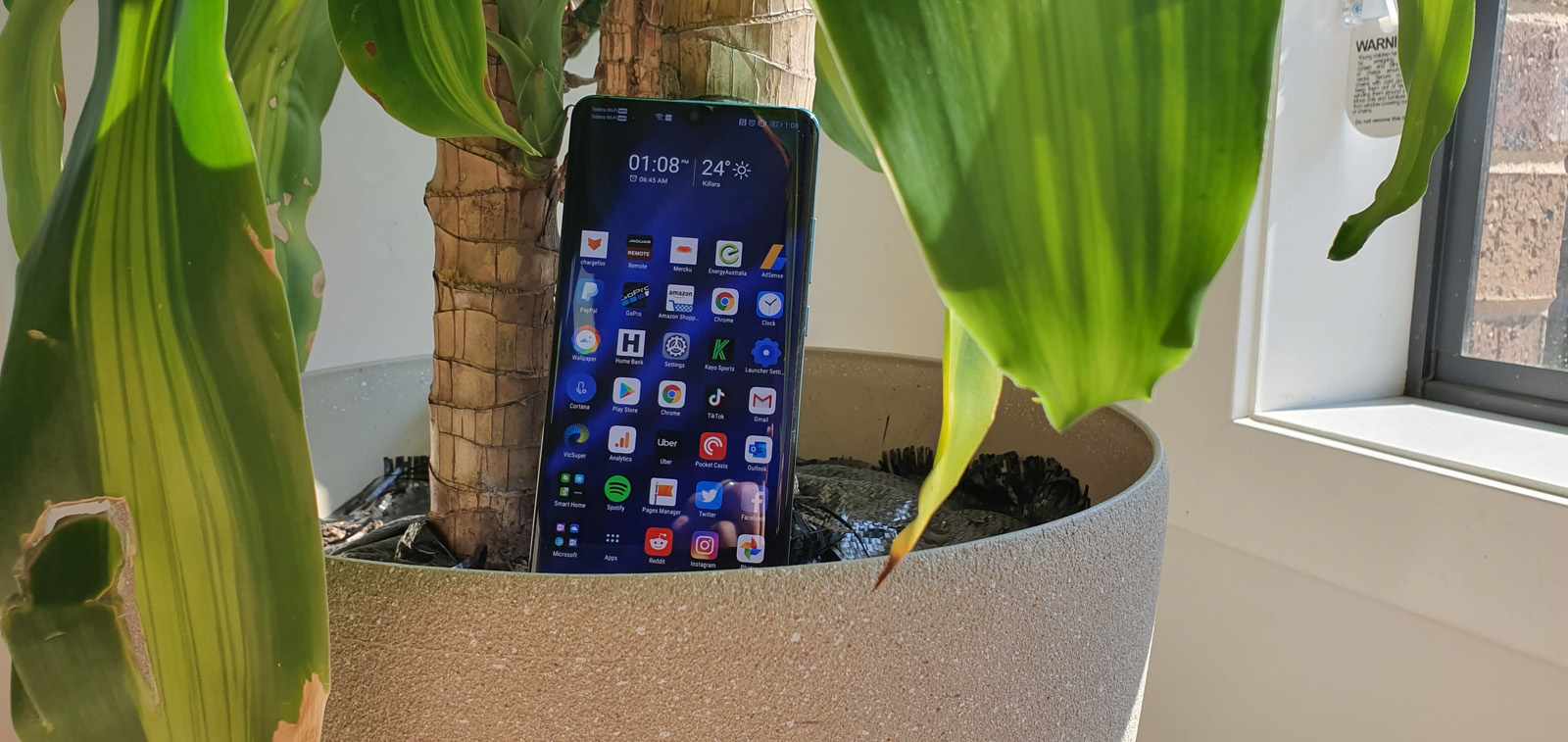

PERFORMANCE
Sure it looks good, but how does it perform?
What you see and interact with is the beautiful design of the P30 Pro, but it’s perhaps what you can’t see, on the inside of the device that is the most important. Huawei has packed in their Kirin980 Octa-core Processor running on their 7nm architecture from TSMC, the same platform Apple’s A12 Bionic chip is built on. Given processor giant Intel isn’t even at 7nm, it’s an impressive effort. Competitor Qualcomm has announced their 7nm processor which will arrive with 5G on their Snapdragon 855 Mobile platform, later this year.
The P30 Pro leverages AI in a number of different ways, the camera modes, image stabilisation, battery management and more and to achieve that, they included not 1, but 2 dedicated NPUs. These Neural-network Processing Units are microprocessors that specialise in accelerating machine learning algorithms. Basically, they’re specifically designed for the task at hand, much like when we offload the graphics rendering to the GPU, rather than the CPU.
Speaking of that CPU, remember we mentioned it was an 8-core chip? That’s made up of 2x Cortex-A76 Based 2.6GHz, 2 x Cortex-A76 Based 1.92GHz and 4 x Cortex-A55 1.8GHz. What that translates to is a bloody fast phone. Regardless of the task, I threw at it, the phone was fast, like crazy fast. Launching the camera, snapping photos, opening games, switching between apps, it’s all just fast. One of my go-to apps for performance testing is a very practical one. Launching the game Pokemon Go which is typically a dog to open, on some phones taking up to 30 seconds. On the Huawei P30 Pro, it takes just 7.5 seconds to launch. Compare this to almost another full second on the Samsung Galaxy S10+.
Software
The phone runs Android 9.0 Pie at its core, with only mild customisation from Huawei taking the OS to EMUI 9.1. Obviously many of us wish there was a way to run stock Android on a fantastic piece of hardware like this, however, those AI integration pieces are because Huawei has worked hard at the software layer. Personally, I love the Microsoft launcher as it gives greater customisation over the density of the application icons, but that’s the great thing about Android-based phones, you can switch out the launcher for the one you love.
If you buy this phone, it’s almost guaranteed to not be your first smartphone. If you grab the Phone clone app from the store, you’ll be able to migrate your apps and data quickly and easily. While I personally love to start a new phone fresh, download and sign into all my accounts, not everyone is like me, so having this convenient and fast setup process is very helpful.
One of my favourite things about the Huawei P30 Pro is its navigation gestures. To go back, there’s a very natural swiping in from the right edge of the display. This feels so much more natural than the S10’s swipe up from the bottom to go backwards, you can certainly get used to either, but this works well for me. In navigation settings, there are options to return the standard Android navigation, but with these full-screen displays, I’m a massive fan of gesture-based navigation and hidden buttons.
Storage
As you go about taking photos, video, installing apps and downloading podcasts, you’ll need plenty of storage. The 256GB available on the P30 Pro is a very healthy amount by today’s standards. Even after running it as my primary phone for a couple of weeks, I still have 205.9GB free. If this still isn’t enough for you, then you can drop in a MicroSD card and expand the storage even further.
Dual-sim
If you’re not using that micro-SD slot for additional storage, you can drop a second SIM into the phone, thanks to its dual-4G SIM Card Slots. This is great for those people who like to structurally separate themselves between work and home lives. The most common reason for this is to easily know the greeting you should give when picking up a call, as you are shown which SIM and number the call is coming in on. You can also send messages by selecting the appropriate SIM, which can also be named to whatever you want, like Home, Work, rather than simply SIM1 and SIM2.
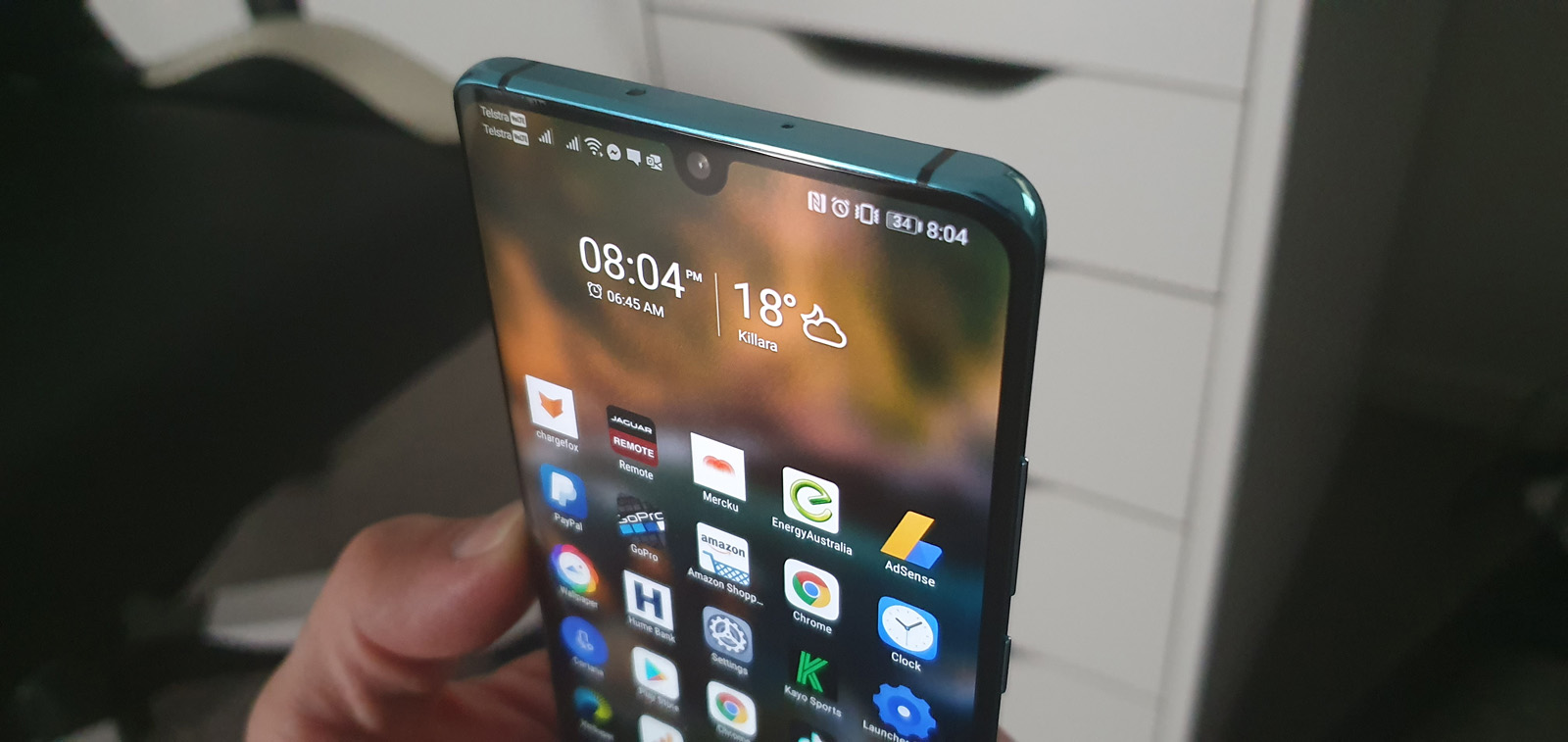

ISSUES
Room for improvement
No front facing zoom
Having the ability to zoom out on the rear camera kind of hooks you into thinking you can zoom out regardless of the camera you’re using. That’s not actually the case, while the front-facing camera on the P30 Pro is fairly wide in its field of view, it would be nice to have the same ability to go 0.6x and capture more of the environment around you when capturing selfies.
Aspect ratios
The camera in this phone is amazing, however, when you dive into the settings, you’ll find the 40MP is actually only available with a 4:3 aspect ratio. If you select full screen, that drops to just 6MP. When the entire face of the phone becomes the camera viewfinder, it’s a pretty incredible experience, but there’s a massive quality trade-off. A similar issue occurs when you shoot video at full resolution (4K). To go fullscreen when recording video, you need to drop to 1080p, largely a result of our elongated phones that no longer match the 16:9 aspect ratio of the past.
Dual sim or extra storage
While I am a massive fan of the dual-4G SIM slot, you have to choose between that functionality or adding storage to the device. There have been models of Huawei devices that essentially had a triple tray, supporting 2x sim cards and a microSD card. It’d be great to see a return of that, however the space required to facilitate that is definitely greater, potentially consuming battery space.
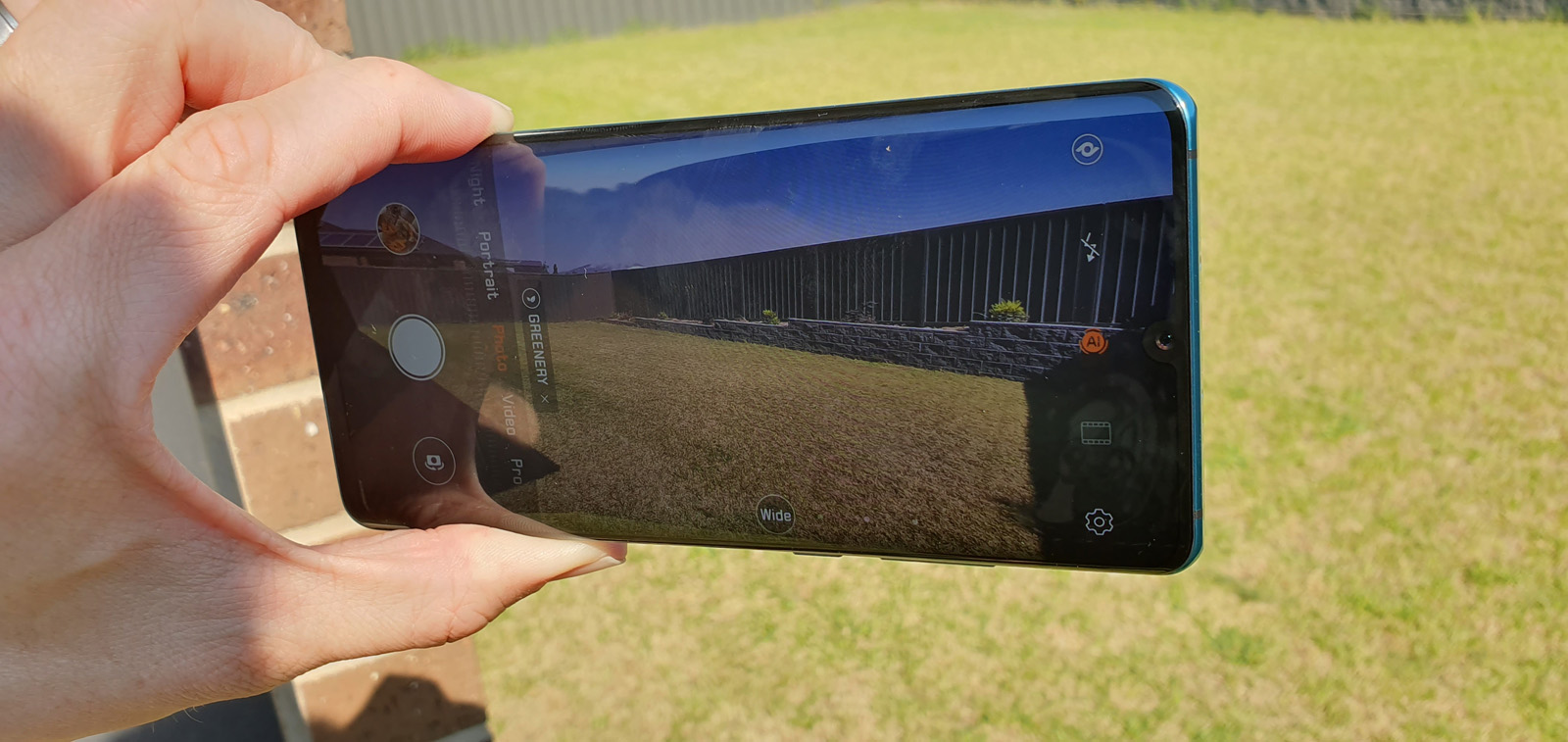

PRICE & AVAILABILITY
How much and when can you get one ?
The Huawei P30 Pro goes on sale on April 16th and costs A$1,599.00, while the P30 which misses some of the features, costs just A$1,099.00 from stores like JB Hi-Fi, and Harvey Norman, or direct through the carriers like Telstra, Optus and Vodafone. The phone is available in just 2 colours in Australia, Aurora (reviewed) and Breathing Crystal, whichever you choose, I don’t think you can go wrong.
If you pre-order before April 15th, then you can get a bonus Sonos One speaker (via redemption) worth A$299.00. If you were considering buying a Sonos One anyway, you could look at this as $299 off the price.
Whichever way you buy, the price of Huawei’s latest flagship is a serious discount on what you’ll pay elsewhere. An iPhone XS Max with the same storage (256GB) will cost you a staggering A$2,049.00. A Samsung Galaxy S10+ is available in select colours in a 128GB configuration that’ll cost you A1,499.00, at half the storage capacity, it’s just A$100 less. If you jump to the next tier, the 512GB models, you’ll pay A$1,849.00.
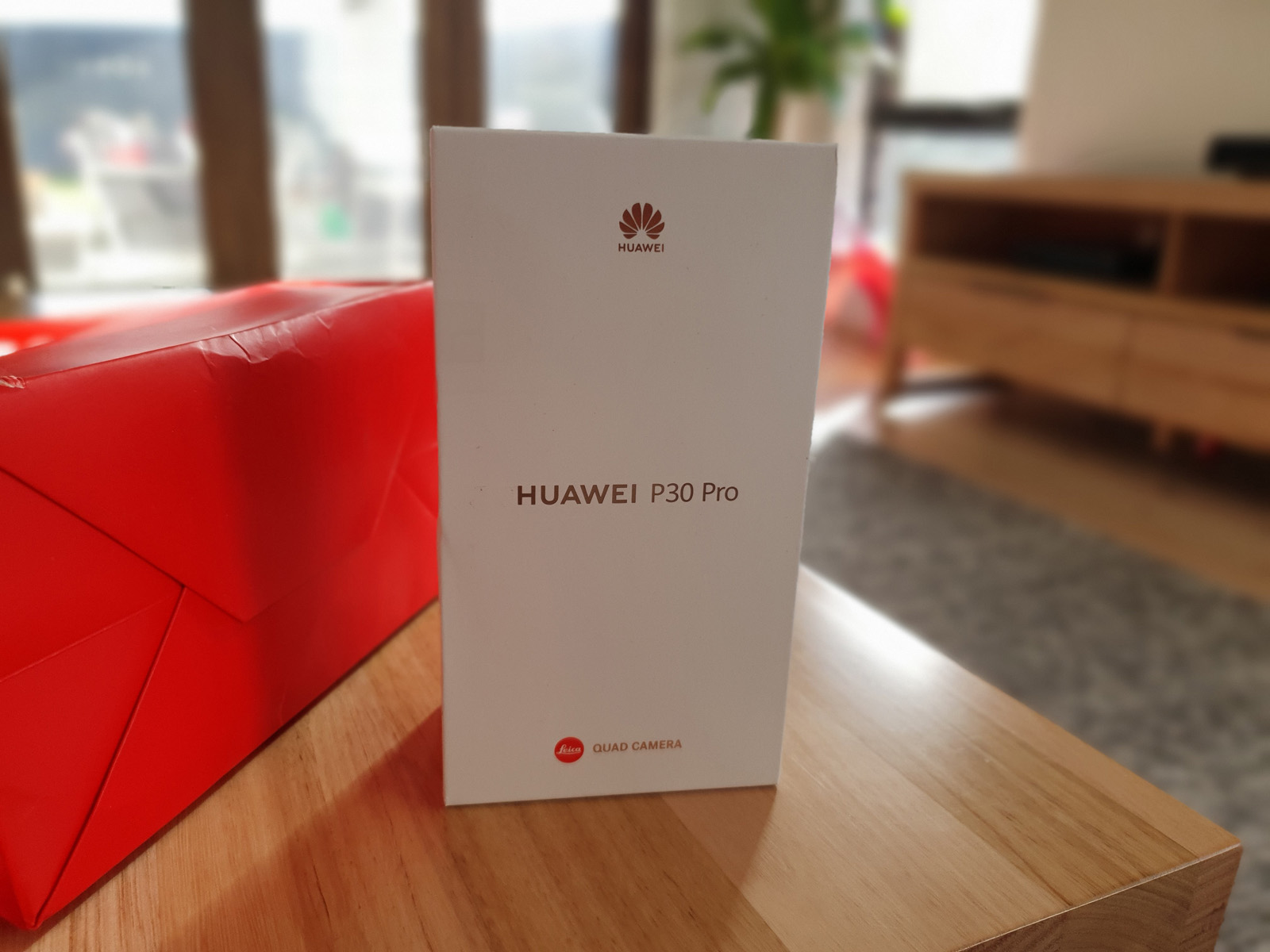

OVERALL
Final thoughts
All things considered, this is an absolutely stellar phone and anyone who buys it will definitely be happy with their purchase. The colours are a strong, bold choice of the very overdone straight blacks or whites, which I actually enjoy, however standing out may not be for everyone.
In terms of performance of both the device day-to-day, as well as that crazy camera system and zoom, is nothing short of amazing. Huawei really has set the benchmark high for phones in 2019 with the P30 Pro and I’m just thankful that we get to buy them here in Australia, sorry to any of our US-based friends reading this.
If you’ve never bought a Huawei device, you should definitely consider them for your next phone, the features and performance (and battery life) available with the P30 Pro is a seriously compelling product offering. Go into retail stores, get hands-on with them and I think you’ll be impressed.
For those who have bought from Huawei before, you’ll know most of the benefits already, however, this device is easily their best yet and it’s staggering what’s been improved in just a few months since the Mate 20 pro was launched.
